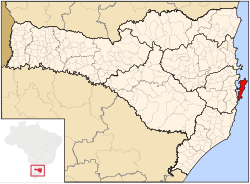NYtimes
SYDNEY, Australia — Kim Cobb, a marine scientist at the Georgia
Institute of Technology, expected the coral to be damaged when she plunged into
the deep blue waters off Kiritimati Island, a remote atoll near the center of
the Pacific Ocean. Still, she was stunned by what she saw as she descended some
30 feet to the rim of a coral outcropping.
“The entire reef is covered with a red-brown fuzz,” Dr. Cobb said when
she returned to the surface after her recent dive. “It is otherworldly. It is
algae that has grown over dead coral. It was devastating.”
The damage off Kiritimati is part of a mass bleaching of coral reefs
around the world, only the third on record and possibly the worst ever.
Scientists believe that heat stress from multiple weather events including the
latest, severe El Niño, compounded by climate change, has threatened more than a third of Earth’s coral reefs. Many may not
recover.
Coral reefs are the crucial incubators of the ocean’s ecosystem,
providing food and shelter to a quarter of all marine species, and they support
fish stocks that feed more than one billion people. They are made up of
millions of tiny animals, called polyps, that form symbiotic relationships with
algae, which in turn capture sunlight and carbon dioxide to make sugars that feed
the polyps.
An estimated 30 million small-scale fishermen and women depend on reefs
for their livelihoods, more than one million in the Philippines alone. In
Indonesia, fish supported by the reefs provide the primary source of protein.
“This is a huge, looming planetary crisis, and we are sticking our heads
in the sand about it,” said Justin Marshall, the director of CoralWatch at
Australia’s University of Queensland.
Bleaching occurs when high heat and bright sunshine cause the metabolism
of the algae — which give coral reefs their brilliant colors and energy — to
speed out of control, and they start creating toxins. The polyps recoil. If
temperatures drop, the corals can recover, but denuded ones remain vulnerable
to disease. When heat stress continues, they starve to death.
Damaged or dying reefs have been found from Réunion, off the coast of
Madagascar, to East Flores, Indonesia, and from Guam and Hawaii in the Pacific
to the Florida Keys in the Atlantic.
The largest bleaching, at Australia’s Great Barrier Reef, was confirmed
last month. In a survey of 520
individual reefs that make up the Great Barrier
Reef’s northern section, scientists from Australia’s National Coral Bleaching
Task Force found only four with no signs of bleaching. Some 620 miles of reef,
much of it previously in pristine condition, had suffered significant
bleaching.
In follow-up surveys, scientists diving on the reef said half the coral
they had seen had died. Terry Hughes, the director of the Center of Excellence for Coral Reef
Studies at James Cook University in
Queensland, who took part in the survey, warned that even more would succumb if
the water did not cool soon.
“There is a good chance a large portion of the damaged coral will die,”
he added.
Scientists say the global bleaching is the result of an unusual
confluence of events, each of which raised water temperatures already elevated
by climate change.
In the North Atlantic, a strong high-pressure cell blocked the normal
southward flow of polar air in 2013, kicking off the first of three
warmer-than-normal winters in a row as far south as the Caribbean.
A large underwater heat wave formed in the northeastern Pacific in early
2014, and has since stretched into a wide band along the west coast of North
America, from Baja California to the Bering Sea. Nicknamed the Blob, it is up
to four degrees Fahrenheit warmer than surrounding waters, and has been blamed
for a host of odd phenomena, including the beaching of hungry sea lions in
California and the sighting of tropical skipjack tuna off Alaska.
Then came 2015, with the most powerful El Niño climate cycle in a
century. It blasted heat across the tropical and southern Pacific, bleaching
reefs from Kiritimati to Indonesia, and across the Indian Ocean to Réunion and
Tanzania on Africa’s east coast.
“We are currently experiencing the longest global coral bleaching event
ever observed,” said C. Mark Eakin, the Coral Reef Watch coordinator at the
National Oceanic and Atmospheric Administration in Maryland. “We are going to
lose a lot of the world’s reefs during this event.”
Reefs that take centuries to form can be destroyed in weeks. Individual
corals may survive a bleaching, but repeated bleachings can kill them.
Lurid reports of damaged reefs started coming in from worried scientists
in the summer of 2014.
Lyza Johnston, a marine biologist in the Northern Mariana Islands, dived
to the reefs off Maug, a group of small islands: “In every direction, nearly
all of the corals were bright white.”
Misaki Takabayashi, a marine scientist at the University of Hawaii at
Hilo, surfed the waves above the blue rice coral there: “I could see what
looked like bleached white ghosts popping up off the ocean floor at me.”
Cory Walter, a senior biologist at the Mote Marine Laboratory in
Florida, peered down from a boat over Wonderland Reef off the Lower Florida
Keys: “It almost looks like it snowed on the reef.”
Predicting the duration of the bleaching or forecasting the next one is
difficult. The Blob has cooled somewhat, and El Niño, while weakening, is
expected to stretch into 2017.
Dr. Eakin, the coral-reef specialist at the National Oceanic and
Atmospheric Administration, said he expected the bleaching to continue for nine
more months. Scientists will not be able to measure the full extent of the
damage until it is over.
What is clear is that these events are happening with increasing
frequency — and ferocity. The previous bleachings, in 2010 and 1998, do not
appear to have been as extensive or prolonged as the current one.
The 1998 bleaching, which Dr. Eakin said had been set off by a fierce El
Niño, killed around 16 percent of the world’s coral. By 2010, oceans had warmed
enough that it took only a moderate El Niño to start another round.
Then in 2013, Dr. Eakin said, “a lot of bleaching happened due to
climate change, before the El Niño had even kicked in.”
Reefs that were bleached in 2014, like those in the Florida Keys and the
Caribbean, had no time to regenerate before suffering further thermal stress
from El Niño last year, leaving the coral vulnerable to disease and death.
The reefs in the Florida Keys “are about to go into a third year
straight of bleaching, something that has never happened before,” said Meaghan
Johnson, a marine scientist at the Nature Conservancy. “We are worried about
disease and mortality rates.”
Ove Hoegh-Guldberg, the director of Australia’s Global Change Institute,
noted that 2015 was the hottest year ever recorded, both on land and in the
oceans — breaking a record set just the year before.
“Rising temperatures due to climate change have pushed corals beyond
their tolerance levels,” he said, adding that back-to-back bleaching can be
particularly deadly to the corals.
El Niño warms the equatorial waters around Kiritimati Island more than
anywhere else in the world, making it a likely harbinger for the health of
reefs worldwide. That is why Dr. Cobb, the Georgia Tech scientist who made the
recent dive, has been making the trek at least once a year for the past 18 to
the tiny atoll, part of the Line Islands archipelago.
Though the atoll sits just north of the Equator, trade winds suck water
up from the depths of the ocean, usually keeping the water temperature
surrounding the reefs a healthy, nearly constant 78 degrees.
But in 2015, the expected upwelling of deep, cold water did not happen,
Dr. Cobb said, speaking by satellite phone after her dive. So water in the
atoll was 10 degrees warmer than normal, and never cooled enough to allow coral
to recover.
“The worst has happened,” she said. “This shows how climate change and
temperature stresses are affecting these reefs over the long haul. This reef may not ever
be the same.”














